How Much Exercise Does a Dog Need?

Like humans, dogs need regular exercise in order to lead happy and healthy lives. Exercise helps to keep the brain stimulated, promotes heart, muscle and bone health, and is really pleasurable for most dogs.
As the obesity epidemic continues to worsen in people, more and more of our pets are becoming overweight and obese as well. Currently, it is estimated that up to 60 percent of dogs in the U.S. are overweight or obese (1).
While reducing how many calories an overweight dog eats is most important, exercise is also a crucial component of a weight loss program and can help dogs to maintain their muscle mass while losing body fat. Wondering how much and what types of exercise your couch potato cuddler or rambunctious squirrel chasers need? Read below to find out.
Why Do Dogs Need Exercise?
Although dogs became domesticated at least 14,000 years ago, many of their behavioral instincts and drives can be traced back to their common wolf ancestor. Similarly to wolves, dogs still have instincts to hunt, stalk, and chase prey. And, likewise, they also feel a need and a desire to exercise.
Once dogs became domesticated and humans began to drastically change their sizes and appearances, certain breeds of dogs were bred to perform work in the form of different types of exercise such as pulling sleds or herding sheep. This has created a great diversity in our dog’s requirements for exercise.
How Much Exercise Does a Dog Need?

So how much exercise does a dog need every day? This can be a difficult question to answer and the research is lacking in this field. Generally speaking however, most dogs should get between thirty minutes and two hours of exercise every single day, depending on age, breed, and overall activity level.
It is important to consult with your veterinarian before starting any exercise program for your dog. Your vet can make sure your dog is healthy enough for certain activities and even help design an exercise regime that fits your dog’s specific health needs.
For example, dogs with arthritis or mobility issues can still benefit from exercise. However, your vet may suggest lower-impact activities to avoid putting too much strain on painful joints. And, in some cases, they may recommend adding a nutritional supplement designed to support joint health to your dog’s diet. Such supplements are formulated with ingredients that help promote healthy joints, enhance mobility, and reduce inflammation.



Breed and Size: Does it Impact a Dog’s Exercise Needs?

Different breeds of dogs were created for different purposes and this has greatly impacted their needs for exercise.
Dogs in the sporting group, such as the friendly Labrador Retriever, were bred to help hunters catch or retrieve game. Herding dogs, such as the Australian Shepherd, were bred to herd livestock. The Siberian Husky, a breed in the working dog group, was bred to pull sleds through miles and miles of snow each day.
Meanwhile some breeds, like those in the toy breed group, which includes Chihuahuas and Pugs, were bred to provide people with companionship and make wonderful lap dogs.
The purpose that each breed was bred for will generally guide the amount and type of exercise that is best for each dog.
How Much Exercise Do Puppies Need?
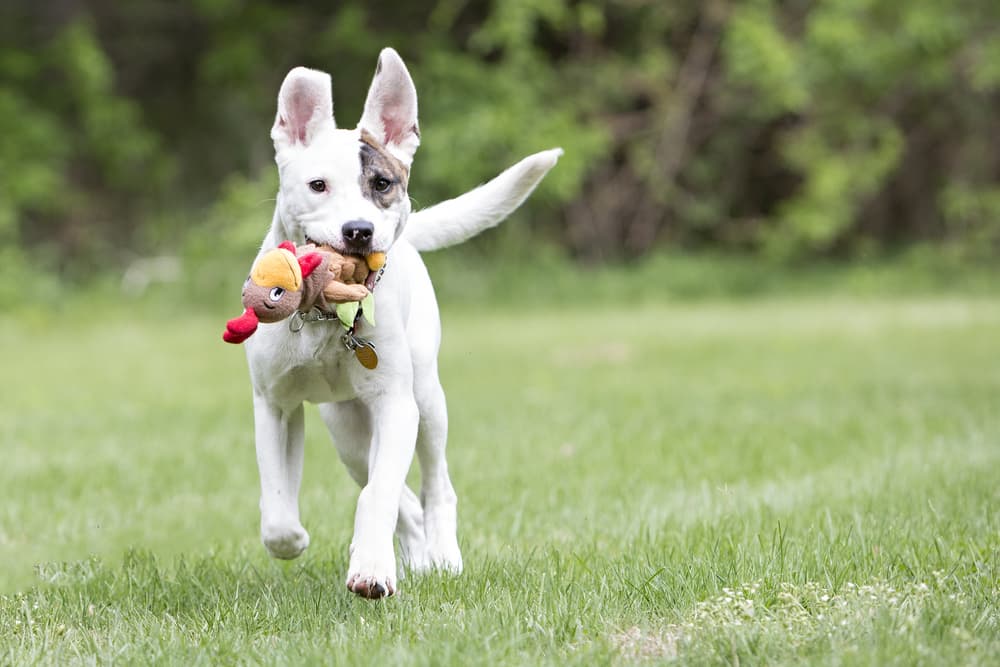
Puppies have unique requirements for exercise and sleep. In the puppy stage, a dog’s body is constantly putting energy into growth and development. For this reason, you will notice that puppies sleep long and often. In between periods of sleep, puppies typically are very energetic and go through short bursts of wanting to run and play.
While puppies may seem like they have the energy to go all day, their brains are not yet fully developed and they often do not know when enough is enough. Additionally, certain breeds of dogs are prone to developmental orthopedic (bone-related) diseases such as hip dysplasia or osteochondritis dissecans (OCD). For these reasons, it is best not to force a puppy to exercise.
Forced exercise is any amount of activity beyond what your puppy would voluntarily perform with other puppies of a similar age and breed. While your puppy is growing, play with him for only about 15 to 20 minutes at a time and closely monitor his body language. Once he starts showing any signs of being tired such as panting, yawning, or laying down, take that as your cue to stop throwing that toy.
Once your puppy is fully grown, you can begin taking him out with you on runs or start longer sustained periods of exercise.
Exercise Benefits for Dogs

Exercise has a wide range of benefits for our four-legged friends. The most obvious benefits are health benefits. These health benefits include:
Strong muscles. Regular exercise helps to build strong muscles in dogs. Strong musculature can help to support joints and prevent injuries.
Joint support. Maintaining muscle mass is especially important as dogs age and can lessen the symptoms of osteoarthritis, a painful joint disease present in many senior pets.
Heart health. Regular activity also helps to keep your pup’s heart healthy.
Making sure your dog exercises can also lead to behavioral benefits. Have you ever come home from a long day at work and find that your dog has chewed up that favorite shoe of yours? Destructive behaviors such as chewing, barking, and digging may be your dog’s way of telling you that he needs to exercise. Dogs often display destructive behaviors not to spite us, but out of boredom and pent up energy.
Exercising your dog can also help to ease some common behavioral disorders such as separation anxiety and compulsive behaviors.
Types of Dog Exercises to Try With Your Dog

There are endless ways to exercise your dog, so pick an activity that works for both of you. Try out a few of the exercises listed below to find what works best for your dog.
When starting any new exercise, make sure to start small and gradually increase exercise duration. If your dog shows any signs of pain or discomfort, consult your veterinarian for guidance. Depending on your dog’s specific health needs, your vet may prescribe a medication to alleviate arthritis pain or recommend a hip and joint supplement to help improve joint function.



Walking Your Dog

There is a reason that this tried-and-true activity is one of the most popular ways pet parents exercise their dogs. It’s enjoyable for both humans and dogs and is suitable for almost all breeds.
Even if your dog has access to a backyard, taking him on a daily walk around the neighborhood will allow him to take in new exciting sights and smells. When walking for exercise, train your dog to keep a quick pace in order to reap the cardiovascular benefits. However, you should allow “sniff breaks” every so often to prevent frustration and let your dog do his dog thing.
Running With Your Dog
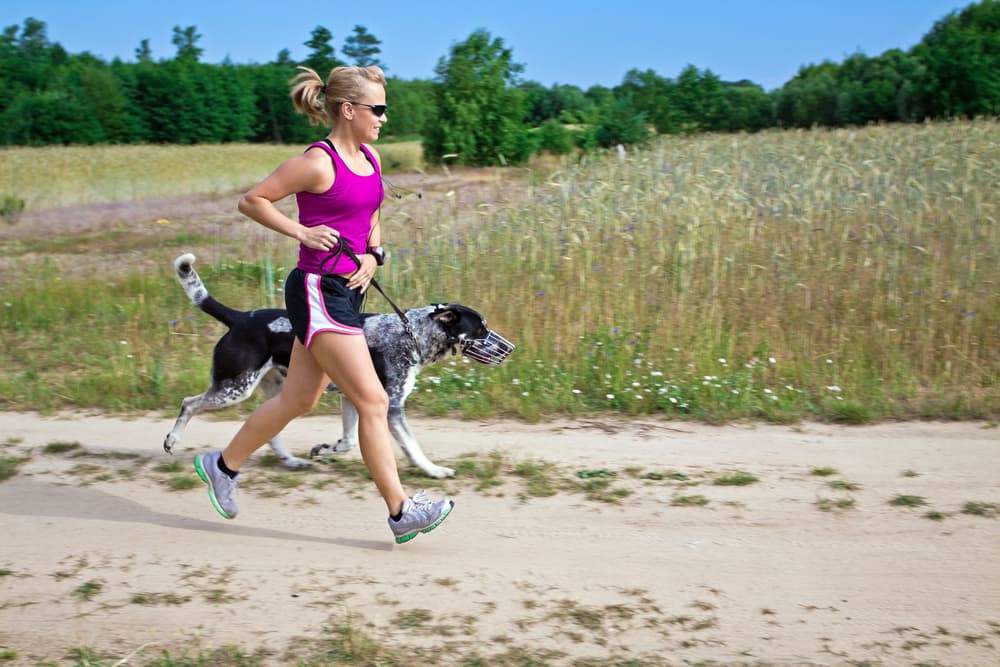
High-energy breeds like Viszlas and German Short-Haired Pointers tend to make great running companions. Running is a great way to prevent weight gain in dogs—plus, it will keep you fit too! Keep in mind that running is a high impact exercise so it may not be a good idea for dogs with osteoarthritis or other injuries.
Dog Swimming
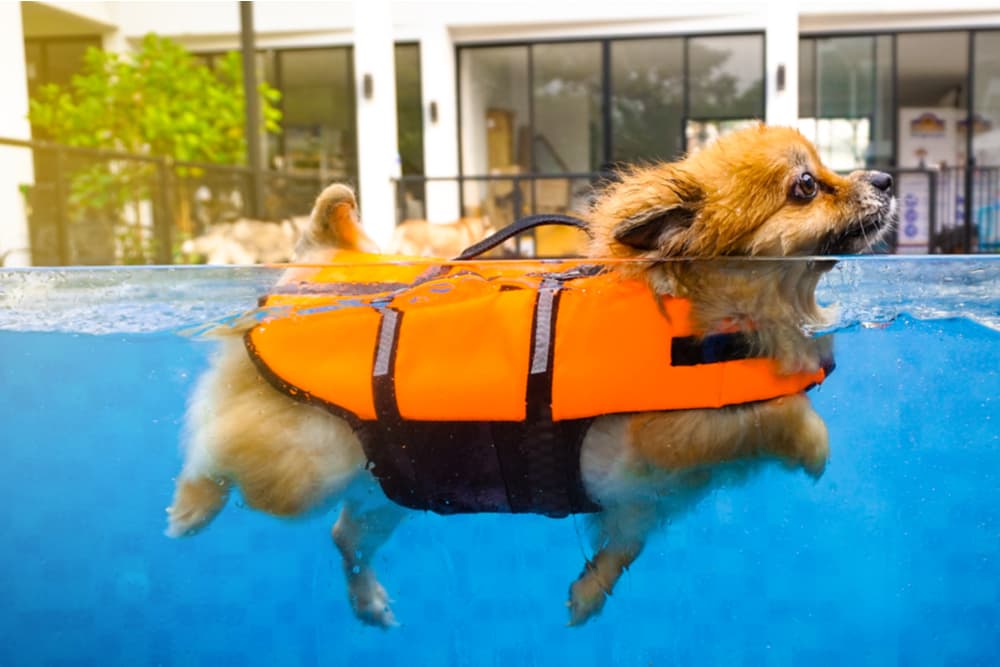
In dogs that love the water, like Labrador Retrievers, swimming can be a very beneficial exercise. Swimming is a low impact activity so it is well suited for dogs with osteoarthritis or dogs recovering from orthopedic injuries. Not sure how to safely teach your dog how to swim? Don’t worry—here’s how to do it!
Agility Training

Agility is a sport in which a dog owner directs their dog through a timed obstacle course. Dogs in the herding group, including Border Collies, Australian Shepherds, and Australian Cattle Dogs, tend to dominate this sport, but many different types of dogs can enjoy agility. Agility is as much of a mental workout as it is a physical workout.
Indoor Playtime
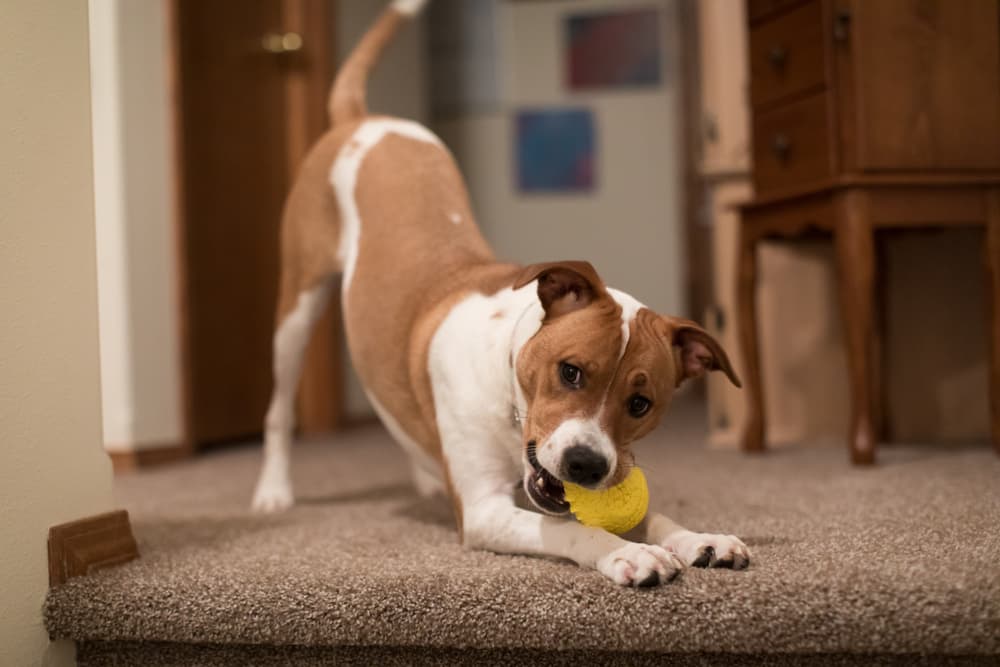
For small breeds and those less suited for exercise, playing indoors can be a great form of exercise. It can be easy to wipe out a Yorkshire Terrier just by throwing his ball around the living room.
The great thing about exercising your dog indoors is that you can control the temperature. Brachycephalic breeds, those with shortened snouts like Bulldogs and Pugs, are at less risk of overheating when playing in a cool environment. Puzzle toys can provide a great mental workout for any dog and can keep their minds sharp, especially as they get older.
Can Dogs Get Too Much Exercise?
Too much of a good thing can definitely be bad when it comes to exercising your dog. Keeping a close eye on your dog’s body language during activity is crucial.
Signs your dog has had enough exercise include:
- Heavy panting
- Lying down
- Stopping exercise to sit or stand still
Never force your dog to exercise if he is telling you he’s had enough. If you’re worried that your dog isn’t getting enough exercise or think he needs more movement in order to lose weight, talk to your veterinarian to discuss the best options. Here are some key questions to ask your vet so you have all the answers you need to make your dog’s weight loss journey a success.

Dog Exercise Safety When Outdoors
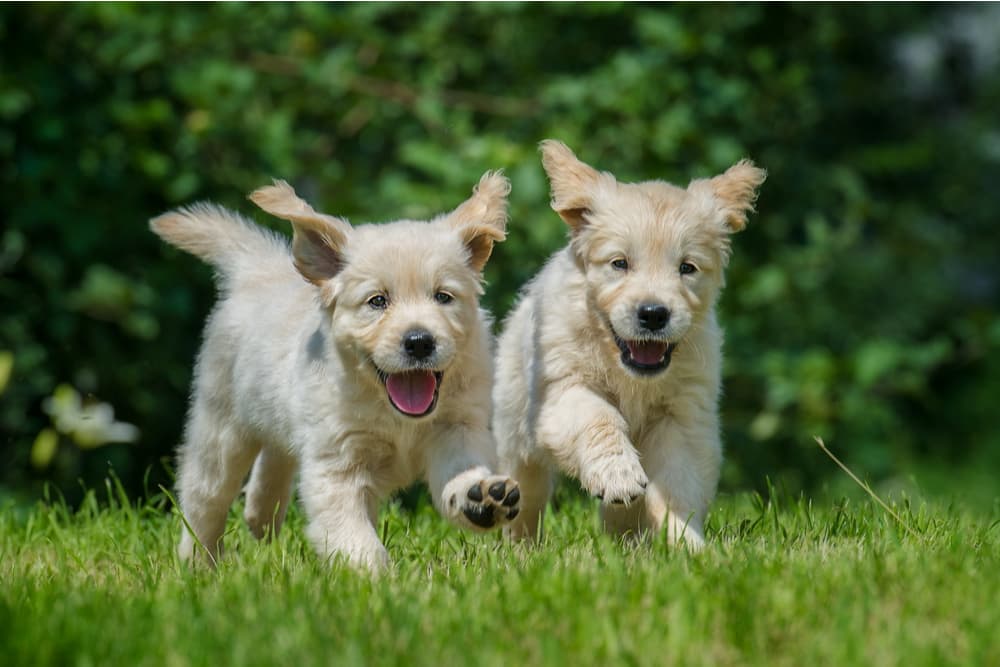
When exercising outdoors, paying attention to the temperature is key. Dogs wear a constant fur coat and are less able to cool themselves off than humans. Overheating can lead to heat stroke, which can be fatal.
In warmer months, avoid exercise during the middle of the day and opt for going outdoors with your pooch in the early morning or late evening when it has cooled off.
Due to their anatomy, brachycephalic dogs are very prone to heat stroke and can overheat even in relatively cool temperatures. Overweight dogs and those with thick coats, such as Huskies, are also at increased risk of heat stroke.
Warmer weather can also lead to foot-pad injuries from hot pavement or asphalt. If the ground feels too hot to keep the back of your hand in place for a few seconds, it’s too hot for your dog’s feet and you should choose a different exercise location or wait until things cool down.









